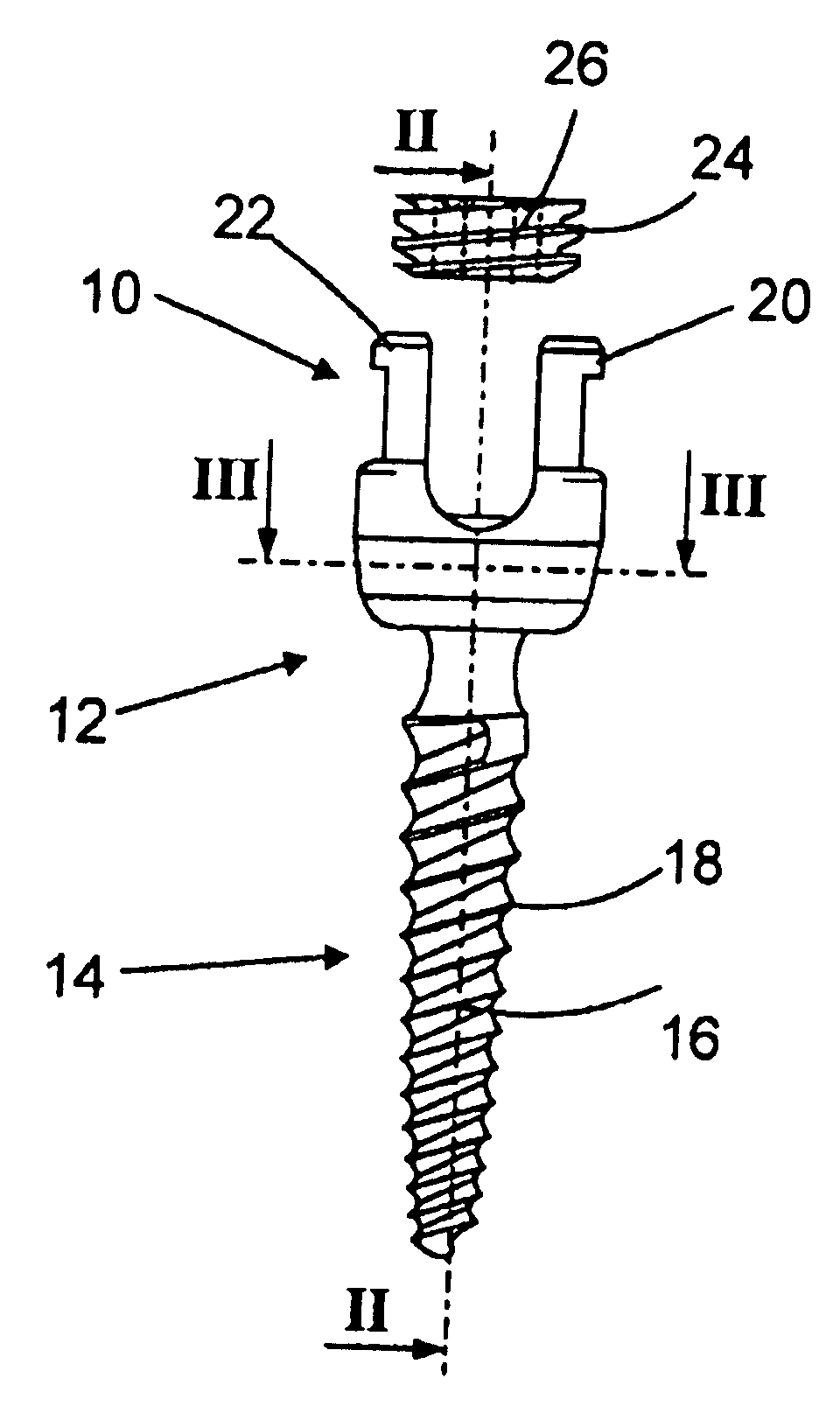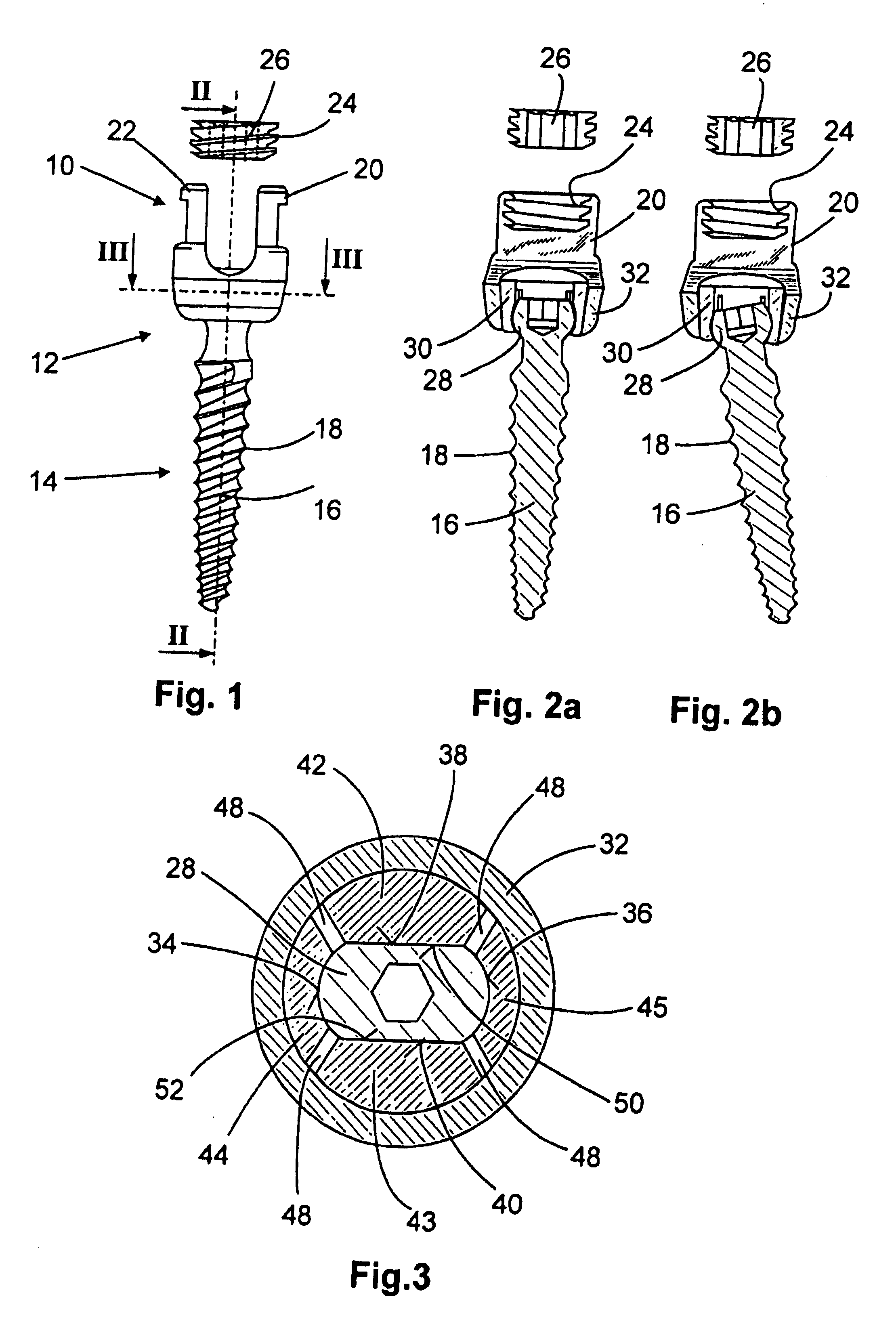Anchoring element for securing a rod of a device for adjusting a human or animal vertrebal column on a vertreba
a technology a rod is applied in the field of an anchoring element for fastening a rod of a device for adjusting a human or animal vertebra on a vertebra, which can solve the problems of reducing the size of the vertebra, reducing the size of the overall anchoring element, and reducing the size of the clamping surface. , the effect of reducing the force required for fixing the mount or the retaining means
- Summary
- Abstract
- Description
- Claims
- Application Information
AI Technical Summary
Benefits of technology
Problems solved by technology
Method used
Image
Examples
Embodiment Construction
[0023] The anchoring element shown in the FIGS. 1 through 6 is a component part of a device for adjusting a human or animal vertebral column as it is sold for example by the trade name XIA available from Stryker Corp. This anchoring element serves to fasten a quite long rod on a vertebral bone and comprises a retaining means 10 for receiving a rod not shown herein, a clamping device 12 and a fastening element 14. The fastening element 14 is formed by a conically tapered shank 16 provided for example with a bio thread 18, a cancellous thread or the like. The anchoring element is inserted and fixed in the vertebral body by means of said fastening element 14.
[0024] The retaining means 10 is formed in a U-shaped configuration and comprises two coaxially arranged crosspieces 20, 22 provided, on their internal side, with a buttress thread 24. Said buttress thread 24 is described in detail in EP 0 885 598 A2. A securing element 26 configured as a grub screw may be screwed in axial directi...
PUM
 Login to View More
Login to View More Abstract
Description
Claims
Application Information
 Login to View More
Login to View More - R&D
- Intellectual Property
- Life Sciences
- Materials
- Tech Scout
- Unparalleled Data Quality
- Higher Quality Content
- 60% Fewer Hallucinations
Browse by: Latest US Patents, China's latest patents, Technical Efficacy Thesaurus, Application Domain, Technology Topic, Popular Technical Reports.
© 2025 PatSnap. All rights reserved.Legal|Privacy policy|Modern Slavery Act Transparency Statement|Sitemap|About US| Contact US: help@patsnap.com



